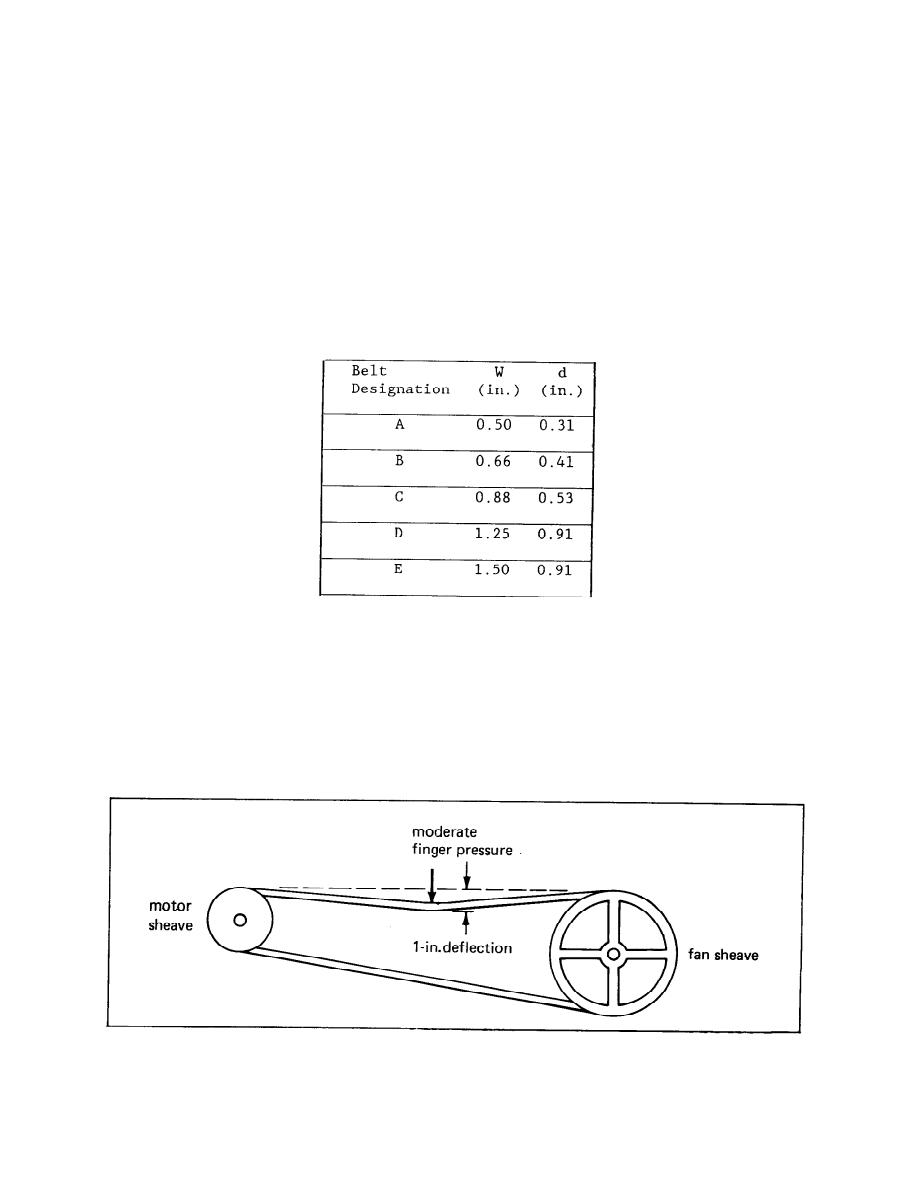

Custom Search
|
|

|
||
 2.8 DRIVE BELTS. Drive belts, or V-belts, are designated by their
cross-sectional dimension and their length, in inches. The standard
cross-section dimensions of a belt width and depth are given in Table 2-3.
A model for a belt might be, for example, B48. This would mean that it has
a cross section of 0.66 inches width, 0.41 inches depth, and 48 inches
length. The length is at its pitch diameter. The actual outside dimension
of the belt will be an inch or two longer. When replacing a fan belt, the
new belt must be of the same cross section as the original. If it is
different, it will ride higher or lower in the groove of the sheave, and
change the effective pitch diameter of the sheave. New belts will normally
ride much higher in the sheave groove than an old belt. When the new belt
wears, its "w" dimension can become smaller, causing the belt to sink deeper
into the groove of the sheave.
TABLE 2-3
Nominal V-Belt Cross Sections
When replacing a drive belt, it is necessary to move the motor to
relieve the belt tension. After the belt is slipped over the sheaves, the
belts are retensioned. One guideline is to make it tight enough so that the
center of the span will deflect 1 inch when moderate finger pressure is
applied (Figure 2-17). This is not very exact. There are tools available
for measuring belt tension, but the required belt tension is not always
known. A simple guideline is to make the belt as loose as possible, without
it slipping on the sheave or flopping around when it is operating. A belt
that is tightened too much puts extra force on the fan and motor bearings,
and can cause bearing failure.
FIGURE 2-17
Setting Belt Tension
2-15
|
 |
|
 |
||